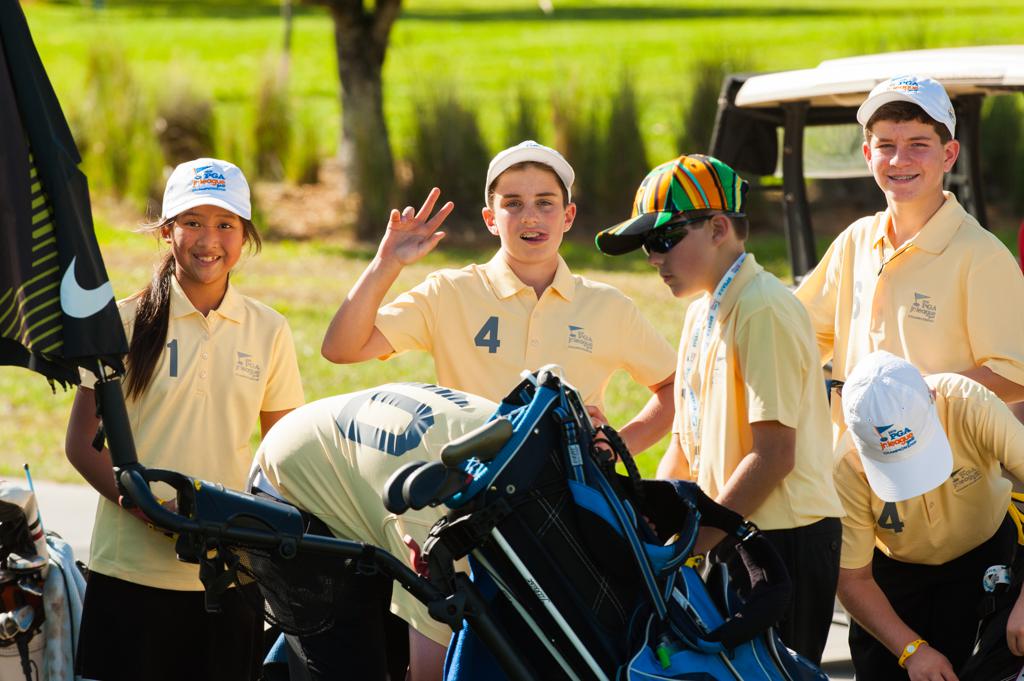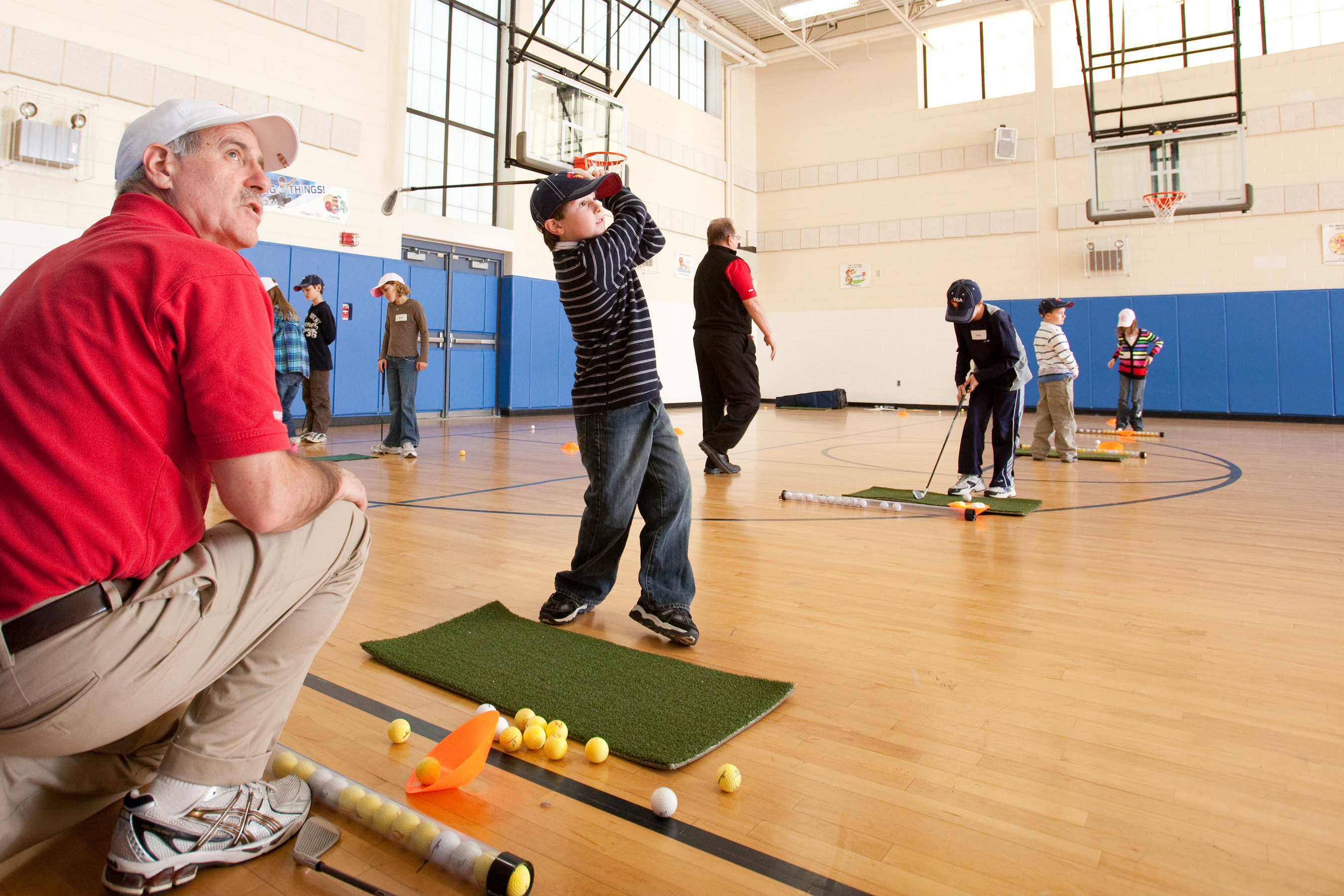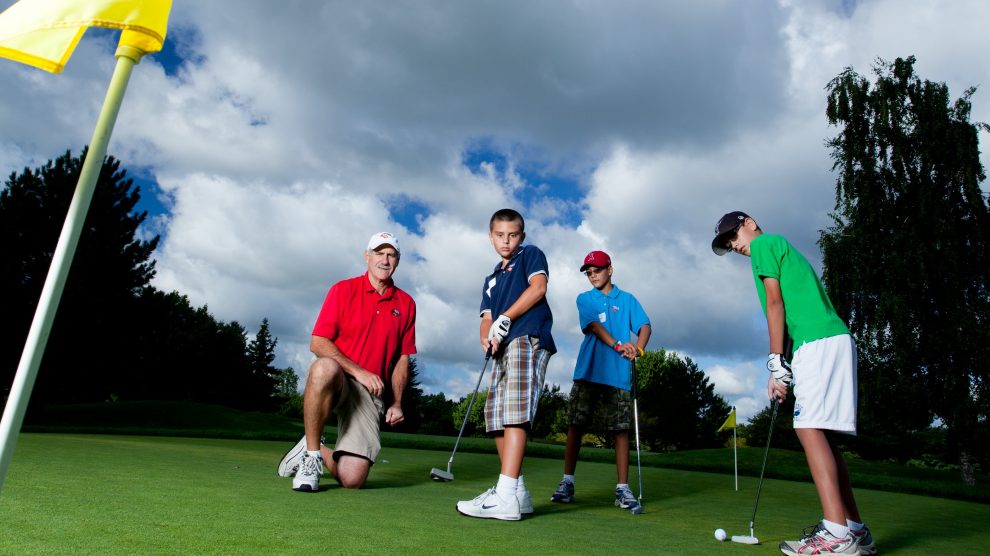It's no secret that golf is getting older.
It's pretty much what the sport has predicted since the 1990s. The Baby Boomers would start to retire and, looking for something to do, many would turn to golf. By the millions, in fact. Add them to a golf population of more-well-to-do folks -- a pie that grows larger as wallets get fatter -- and the game was set for an explosion.
And it was...for a while. In 2005, according to National Golf Foundation estimates, some 30 million people played golf. (Actually, there were 30.6 million golfers in 2003, but no one cites that number for some reason.) Projections at that time were for that number to go higher. Golf course development was booming in the United States, with developers attaching tow cables to the sport and building whole housing communities around golf courses and their related amenities. The pretty views raised property values, and that meant everyone won, particularly the builders and the golfers. After all, just because someone wanted a golf-course view didn't mean they wanted to play said course.
And then the market crashed. Housing lost its value. People lost their asses in the stock market. A good general rule of thumb is that people play golf when they have the money and time. Many lacked money, so many stopped playing. The 2 million women who came into the game in the early 2000s backed out quickly. Then left men of varying ages, particularly guys on the verge of retirement who had to tighten up a little.
Anywhere from 120-220 courses close each year now, which is partially a response to the drop in participation from 30 million to some 24 million now. It's also partially a response to the overbuilding of golf courses in the first place. Somewhere in the area of 1,000 more courses will still have to close for market forces to be in balance.
Golf also missed out on some other key trends. The advent of smartphones and the proliferation of social networks -- public and private -- kept younger people from doing stuff that took longer than 10 minutes. Why meet in person to do a physical activity that costs money and takes 5 hours when you can communicate virtually and do something else much more instantly gratifying?
The sport also has been a loser in the re-invigoration of America's cities in the last quarter-century. For one, land is sparse in cities, so golf-course development isn't a priority unless it's on top of an old landfill. Also, cities offer a wider variety of activities in their limits, meaning golf is competing and losing against activities that cost less, have less uptime and are easier.
Amid that backdrop, of course, a lot of more mainstream media stories paint golf's future as bleak. But I'm here to tell you golf isn't dead. Golf is right-sizing and getting its act together. There are fewer golf courses and fewer big-name equipment makers producing a slower stream of new wares. Our sport is establishing a new baseline, and that's a good thing (probably just in time for normal to change again).
However, golf's participation quandary is a still very much a real thing. Golf needs to identify new players sooner, meeting them where they are and convincing them, from an early age, and their families that this life-long sport is worth their toil and attention. And, finally, golf seems to have noticed that.
In the last half-decade, the sport has developed myriad programs at getting golfers to start early resulting in a 700,000-person increase in junior participation. This is happening while participation in many other mainstay sports is flatlining or declining. So why didn't golf put its collective heads together sooner to concentrate on the next generation of golfers?
"People were coming to us, so there wasn't a need," said PGA of America vice-president Suzy Whaley. "Until 2009, golf was extremely popular. We should've constantly been doing that outreach. There was a great need, realizing that people aren't just going to call you."
In other words, just telling people about a junior clinic was no longer enough. It probably never was, but the wealth of adult golfers was the priority. Golf also collectively realizes now that it has more to compete against for the time and devotion of children and families.
"The traction we've seen over the course of the last five to six years is a focus and prioritization on the fact that we're competing with so many other events and activities for children," Whaley said. "When I grew up, we played outside. We had a few scheduled activities but nothing like the children of today."
Junior golf participation lags behind other sports. More than 13 million children play youth soccer in some capacity. There are an estimated 3.2 million junior golfers today in the United States, which is up from a low of 2.5 million in 2010, but still some 1 million golfers away from the generational high of 2004.
Fortunately, something good has come from the pain of losing that many kids to other activities and hobbies. There are more well-run, centrally developed junior golf programs than ever. The competitive junior golf infrastructure is astounding, with U.S. Kids Golf, the American Junior Golf Association and more creating a fairly clear pathway for juniors to play in a competitive setting against a cohort that is as interested as they are in improving and, yes, perhaps pursuing a professional career someday -- however long the odds. These organizations are run just like pro tours, giving kids world-class experiences.
The view of junior golfers, particularly competitive ones, is also changing among equipment makers. Titleist has long invested in seeding junior programs to their great benefit. Just look at how many kids turn pro playing the ProV1. Noticing the opportunity, TaylorMade Golf has been making a large investment in junior equipment through the AJGA. It's been a wise move from a business perspective, planting the idea early that their equipment is the one kids want to play throughout their golfing life. The company has expanded their junior golf effort with full sets that compete with the offerings from U.S. Kids Golf and others. Cobra Golf has gotten into things with a junior driver complete with a one-time shaft upgrade for a child as they grow. More is coming.
There, too, are increasing gateway programs that bridge the gap from beginning juniors to competitive juniors. Think about Drive, Chip and Putt, which has been a wild success since it was created in 2013. Children aged 7-15 have a chance to play through a qualifying system that can land them in the national finals at Augusta National, which, frankly is probably the best motivator for a golf-crazy parent to coach up their kids who might not already be involved in the game.
There's also PGA Junior League, which just wrapped its sixth year. In fact, Whaley herself runs a team out of Connecticut that landed in the national championship at Grayhawk Golf Club in Scottsdale, Ariz.

"(The Grayhawk staff) treated the kids like they were Tour players, like they would for any of our other (PGA of America) championships," Whaley said, "because it is a national championship."
A total of 80 kids from the 36,000 boys and girls 13 and under who play in PGA Junior League made the national finals. Junior League is held at golf courses, and the 2,900 nationwide teams are managed by PGA and LPGA professionals, many of which already run grassroots junior programs, some of which produce golfers talented enough to play on high school and even college teams.
The finals are great reward for a fun season, which runs from April through July. Teams of eight to 12 players join forces in four nine-hole matches in a two-player scramble. Each match is broken down into three-hole segments called flags, each worth a point based on who wins the most holes in that mini-match. Whichever of the competing two teams in a game wins the most of the 12 available points wins the day. With five or six games in a season, it's not time-intensive, but it's enough to keep the competitive juices flowing in these kids.
However, Whaley says that's not really the goal of PGA Junior League. A parent survey conducted indicated 75 percent of parents label their children as "new to golf," creating an opportunity for more experienced players to mentor others and break down some barriers.
"Boys, girls, doesn't matter. They just consider each other golfers," Whaley said.
While Junior League has grown substantially in its first half-decade, there are limitations. Many Junior League teams are run out of private facilities, some of which will not let children of non-members join their teams. As the number of Junior League teams increase, that will be less of a problem, but it can be an issue in these early stages.
With some 30,000 PGA and LPGA professionals in the pool of available coaches, they can only do so much. Even the biggest boosters of the concept can only handle a handful of teams. At five teams times 10 golfers time 30,000 people, the program would max out at 1.5 million kids. That's not reasonable to expect or a feasible goal. While the PGA of America isn't putting out public targets for growth, a tenfold increase in a decade isn't beyond comprehension or reach. That's 300,000 kids. And with the overwhelming retention rate for PGA Junior League in its early years, there are encouraging signs that kids will stick with the program.
Ultimately, however, PGA Junior League is really just one piece of what needs to be a diversified, broad portfolio of programs geared to get kids into golf in the first place.
The two big stumbling blocks for would-be junior golfers and their families are transportation and cost. The game costs and lot, and it's not always easy to get your kid where they need to go, particularly when finding a golf facility isn't as easy as stumbling on a neighborhood soccer field, baseball diamond or basketball court -- most of which happen to be on school property. That convenience is a fundamental reason why it's easy for parents to sign up their kids for those sports. And there is a golf business -- yes, a for-profit -- that has been successfully delivering golf to kids at schools.
TGA (Teach, Grow, Achieve) Premier Junior Golf is a franchise-based business which targets potential junior golfers in households making more than $50,000, focusing on the 94 percent of kids who don't play the game. Since starting in the Los Angeles area in 2003, TGA has reached some 650,000 kids aged 3-13 in 65 chapters with a largely in-school program dedicated to comprehensive beginner instruction. In other words, TGA is focused on the difficult task of getting a kid to pick up a golf club in the first place by taking golf to them and providing the equipment. There are also STEM (science, technology, engineering and math) skills taught as part of the curriculum.

With the success of TGA golf (they also have a tennis program), CEO Josh Jacobs decided to continue shepherding parents of new golfers further into the game, selling sets of junior equipment. It's a centralized business model that doesn't really exist elsewhere in golf driven by a central tenet.
"I think that there is a lack of structured introductory programs that break down the barriers to entry for golf," Jacobs said.
If there is such a thing, TGA's primary competitor is The First Tee, which will celebrate its 20th anniversary next year. The program teaches children aged 7-18 golf skills and life skills simultaneously, using each to inform the other. They do this in golf facilities (courses, driving ranges) and in schools, reaching some 8,000 elementary schools altogether and another 800 in their after-school programs.
The First Tee is widely supported by golf, raising nine-figure sums to support the programs. Thousands of children that have come through the program have earned collegiate scholarships. Many have come back to The First Tee to give back what they got. It's been a win for the image of golf. What's unclear is The First Tee's impact on golf participation. Through 2015, The First Tee says it has reached 12.2 million young people through its programs at 1,090 golf facilities in 171 chapters. Half of those participants are white, which is a dramatically smaller percentage than the broader population of golfers. That's good. What we're not seeing is the translation of The First Tee's demographics with that of golf. With some 12 million children coming through their programs, and 90 percent of those alums surveyed calling themselves life-long golfers, there has been an expectation in pockets of the golf world that its longitudinal effect would be greater on the golf population. We haven't seen that data manifest itself yet in a golf census, which, frankly and bewilderingly, doesn't exist.
Fundamentally, time, cost and location are still issues golf has and cannot fully address. Golf is hard to find in cities, where more and more young people live. While there has been some indication of a suburbian rebirth as rents escalate in America's biggest cities, those effects are a decade or more away. Golf is predominantly in the suburbs, meaning an increasingly car-less urban society isn't especially friendly to getting players to courses. There's also the factors of time and cost, which can really only be helped in two ways. Golf facilities can conscientiously offer alternative formats without crucifying participants for not playing 18-hole traditional golf, and they can lower the cost at the peril of their own bottom line. Realistically, golf has to make the case that whatever time a person can spare is worth it and that the cost isn't prohibitive. That can happen at a broader level with programs meant to subsidize the cost of golf.
Such a program already exists. It's called Youth on Course, and it's designed for children aged 7-18. Once signed up, these kids can play a round for $5 or less at any of 330 participating facilities in 12 states. The lost profit on the tee sheet is subsidized through donations to the parent non-profit. The program is active at just 2 percent of facilities nationwide, but it's a start.
Why not, then, extend that subsidy to golfers just hitting their stride as adults? An increasing number of private clubs, once with five- and six-figure initiation fees, are creating memberships geared for people under 40, giving them an opportunity to join at a drastically reduced initiation fee and with reduced monthly dues. Could we do the same at public facilities? Of course it would be up to the individual property, but it's not a bad idea to make golf budget friendly from the start of a golfer's adult life. It's all well and good that graduates of these great youth programs consider themselves lifelong golfers, but when reality hits and bills are due, sometimes a $50 green fee isn't going to make the cut. Thinking about the long term is not something golf typically does well.
One thing that would go a long way in helping golf collectively identify and nurture potential adult golfers is remaining in touch with them. Once parents stop paying for everything out of pocket and the kids leave home, golf loses contact. There is no real, true census of golfers or how to get in touch with them. There are myriad reasons, many of which center around the proprietary nature of information. Golf is a business and that business intelligence is worth something. But, if golf could shed that quibble and pursue a player registry akin to what tennis is (perhaps futilely) doing, the sport could connect back with kids after they leave junior golf.
Jacobs believes that tracking should start from Day 1, no matter where a golfer enters the sport's funnel.
"Nobody is concentrating on introductory and recreational, and you can't have recreational without introductory," Jacobs said. "Until the industry gets behind introductory programs that can be measured and quantified and increase the probability the participants will play later in life, the industry could be at a standstill."
The good news is that golf appears to have recognized these problems, and they're coming to the table more often to figure out how to solve them. In the coming months, a player pathway will be released, which many in the industry expect to have broad support that will help usher a player from the junior stages into a hooked adult. However, while central planning is great, the success of that effort will boil down to how it's adopted and executed at the grassroots level. With PGA professionals taking on more for less these days, that's a serious question.
With the USGA, LPGA Tour, PGA of America, PGA Tour, Augusta National, The First Tee, TGA Premier, U.S. Kids Golf and the AJGA at the table, good ideas have come forth. Progress has been made, changing a mindset from the glory days when money was coming in hand over fist.
"We need to go into our communities and offer them the opportunity to participate," Whaley said. "We need people to offer that opportunity who are representative of a particular community.
"It takes an invitation."

